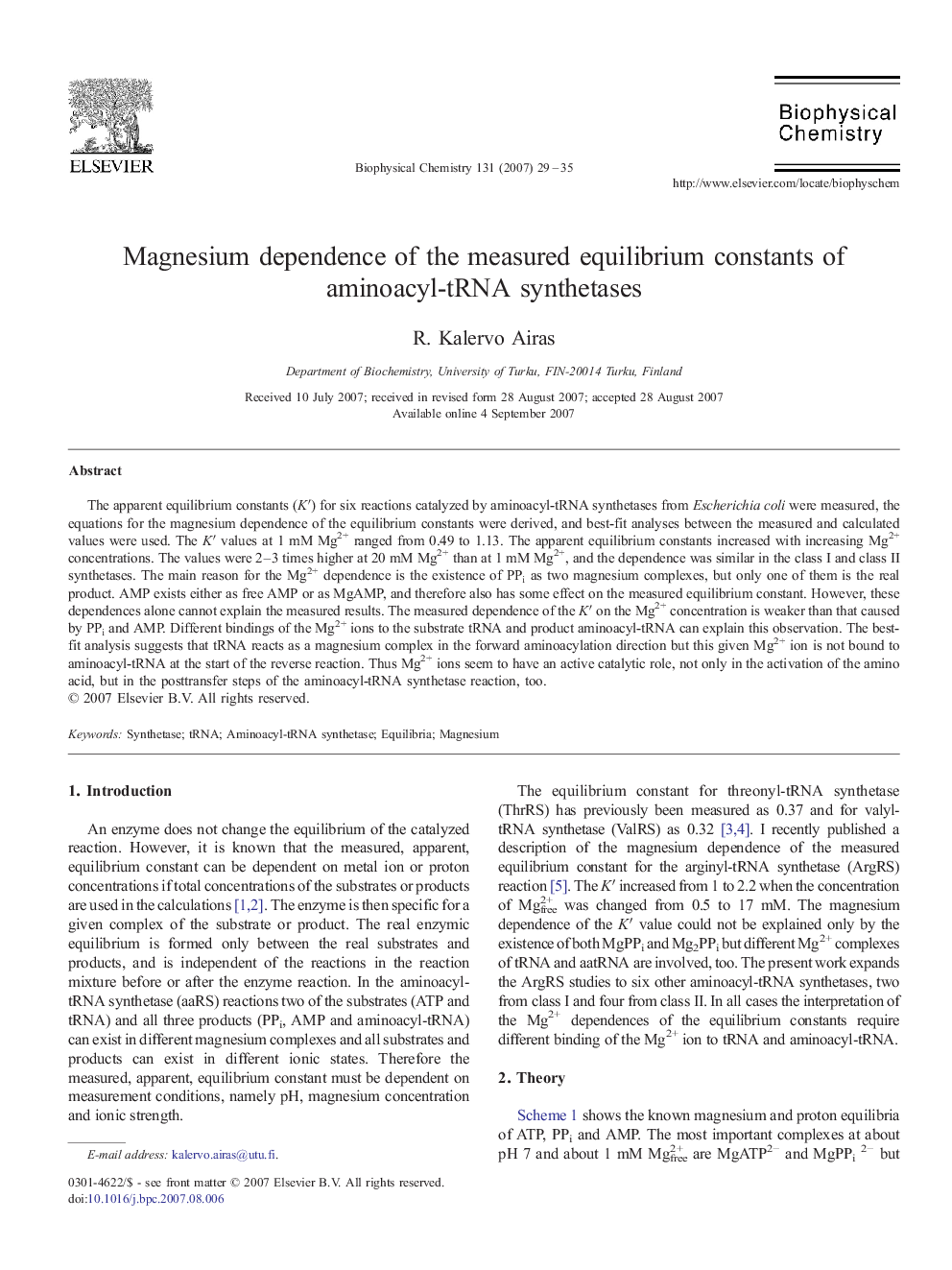| Article ID | Journal | Published Year | Pages | File Type |
|---|---|---|---|---|
| 5372052 | Biophysical Chemistry | 2007 | 7 Pages |
The apparent equilibrium constants (Kâ²) for six reactions catalyzed by aminoacyl-tRNA synthetases from Escherichia coli were measured, the equations for the magnesium dependence of the equilibrium constants were derived, and best-fit analyses between the measured and calculated values were used. The Kâ² values at 1Â mM Mg2+ ranged from 0.49 to 1.13. The apparent equilibrium constants increased with increasing Mg2+ concentrations. The values were 2-3 times higher at 20Â mM Mg2+ than at 1Â mM Mg2+, and the dependence was similar in the class I and class II synthetases. The main reason for the Mg2+ dependence is the existence of PPi as two magnesium complexes, but only one of them is the real product. AMP exists either as free AMP or as MgAMP, and therefore also has some effect on the measured equilibrium constant. However, these dependences alone cannot explain the measured results. The measured dependence of the Kâ² on the Mg2+ concentration is weaker than that caused by PPi and AMP. Different bindings of the Mg2+ ions to the substrate tRNA and product aminoacyl-tRNA can explain this observation. The best-fit analysis suggests that tRNA reacts as a magnesium complex in the forward aminoacylation direction but this given Mg2+ ion is not bound to aminoacyl-tRNA at the start of the reverse reaction. Thus Mg2+ ions seem to have an active catalytic role, not only in the activation of the amino acid, but in the posttransfer steps of the aminoacyl-tRNA synthetase reaction, too.
